Welcome to the Rheem Tankless Water Heater Installation Manual, your comprehensive guide for installing, operating, and maintaining your Rheem tankless water heater. This manual ensures a safe and efficient setup, providing detailed instructions and essential safety tips. Proper installation is crucial for optimal performance and longevity, so adhere to all guidelines carefully. Discover how to harness the benefits of continuous hot water and energy efficiency with Rheem’s innovative solutions. Follow each step meticulously to ensure a successful installation and enjoy reliable service from your Rheem Tankless Water Heater.
1.1 Overview of the Manual
This manual provides a detailed guide for installing, operating, and maintaining your Rheem Tankless Water Heater. It covers essential safety precautions, step-by-step installation instructions, and troubleshooting tips to ensure optimal performance. The manual is structured to help users navigate through the process seamlessly, emphasizing proper venting, electrical connections, and water line setups. Additionally, it includes maintenance schedules and warranty information to prolong the heater’s lifespan. By following the guidelines outlined in this manual, you can ensure a safe and efficient installation, maximizing the benefits of your Rheem Tankless Water Heater. Refer to each section for specific instructions tailored to your needs.
1.2 Importance of Proper Installation
Proper installation of your Rheem Tankless Water Heater is essential for safety, efficiency, and long-term performance. Incorrect installation can lead to safety hazards, reduced efficiency, and potential damage to the unit. Ensure all local codes and manufacturer guidelines are followed to avoid risks such as gas leaks, electrical issues, or improper venting. A well-installed system guarantees optimal energy savings, consistent hot water supply, and compliance with safety standards. Additionally, proper installation validates your warranty, ensuring coverage for parts and labor. Always use qualified professionals for installation to maximize the benefits of your Rheem Tankless Water Heater and ensure a trouble-free experience.
- Ensures safety and efficiency.
- Prevents potential hazards like gas leaks or electrical issues.
- Maximizes energy savings and performance.
- Validates the product warranty.
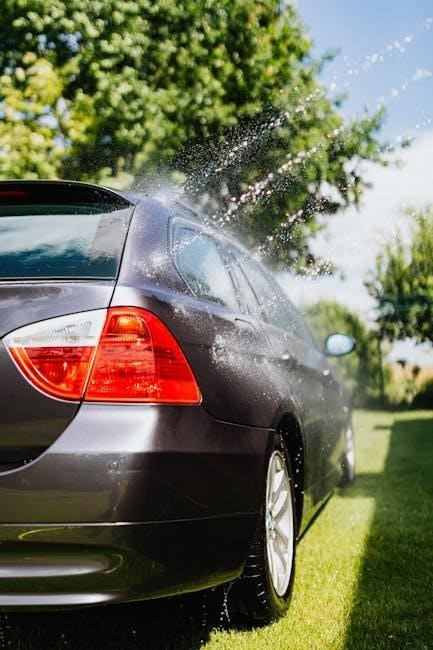
Safety Precautions for Installation
Always follow safety guidelines during installation to prevent hazards. Ensure proper venting, handle electrical and gas connections carefully, and use protective gear to avoid injuries. Adhere to local codes and manufacturer instructions for a safe setup.
Key Safety Tips:
- Ensure proper ventilation to prevent gas leaks.
- Use protective gear like gloves and safety glasses.
- Follow electrical and gas connection guidelines.
2.1 General Safety Guidelines
Before starting the installation, ensure a safe working environment. Always wear protective gear, including gloves and safety glasses, to minimize risks. Verify that the area is well-ventilated and free from flammable materials. Avoid installing the water heater in locations prone to excessive moisture or humidity. Ensure all power sources are turned off before handling electrical components. Use tools appropriate for the task to prevent damage to the unit or surrounding structures. Follow local building codes and manufacturer instructions meticulously. Regularly inspect all connections and components for signs of wear or damage. Proper adherence to these guidelines will help prevent accidents and ensure a successful installation. Stay alert and cautious throughout the process.
2.2 Venting Safety Requirements
Proper venting is essential for safe and efficient operation of your Rheem Tankless Water Heater. Use only approved venting materials, such as PVC, to ensure durability and compliance with safety standards. Install the venting system outdoors to prevent carbon monoxide buildup indoors. Avoid locations with flammable materials or high humidity. Horizontal or vertical concentric termination is recommended for aesthetic and functional installation. Ensure the vent terminal is at least 12 inches above the ground to prevent obstruction. Regularly inspect the vent system for damage or blockages. Failure to follow venting guidelines can lead to safety hazards, including gas leaks or improper combustion. Always adhere to local building codes and manufacturer instructions for venting.
2.3 Warning Labels and Instructions
Adhere to all warning labels and instructions provided in the Rheem Tankless Water Heater Installation Manual to ensure safe and correct installation. Failure to follow these guidelines can lead to serious safety hazards, including gas leaks, electrical issues, or improper venting. Always prioritize proper venting to prevent carbon monoxide buildup and ensure the system operates efficiently. Heed all cautionary labels regarding flammable materials, moisture exposure, and high-voltage components. Installers must be qualified professionals to handle complex setups, especially for gas and high-voltage models. Regularly inspect the unit and venting system to maintain safety and performance. Ignoring these warnings can void the warranty and pose significant risks to your home and family.
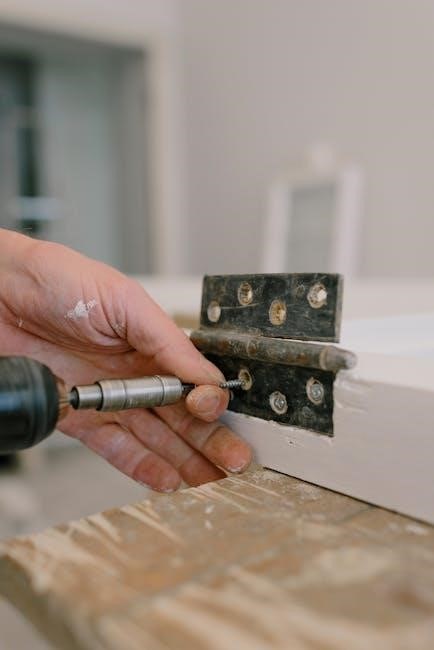
Choosing the Right Rheem Tankless Water Heater Model
Selecting the ideal Rheem Tankless Water Heater model involves assessing your home’s size, hot water usage, and preferred fuel type. Ensure it suits your household demands for efficiency and reliability. Rheem offers various models tailored to different needs, ensuring optimal performance and energy savings. Use the manual’s guidelines to make an informed decision and enjoy uninterrupted hot water supply with Rheem’s innovative solutions.
3.1 Factors to Consider for Model Selection
When selecting a Rheem Tankless Water Heater, evaluate factors like household size, peak hot water demand, and energy efficiency ratings. Consider your home’s maximum simultaneous hot water usage, such as showers, sinks, and appliances. Fuel type (gas or electric) is another critical factor, affecting installation complexity and operating costs. Climate and water temperature also influence model choice, as higher incoming water temperatures in warmer regions may allow for a smaller unit. Additionally, check compatibility with existing plumbing and electrical systems to ensure a smooth installation. Rheem’s models vary in capacity and features, so aligning these with your specific needs ensures optimal performance and efficiency.
3.2 Matching the Heater to Your Home’s Needs
Matching your Rheem Tankless Water Heater to your home’s needs ensures efficient performance and satisfaction. Assess your household’s hot water demand, considering factors like the number of bathrooms, kitchen usage, and laundry requirements. Determine the required flow rate (GPM) based on simultaneous water usage. Consider the temperature rise needed, calculated as the difference between incoming water temperature and desired output. Choose a model with a suitable BTU range for your home’s size and insulation. Additionally, consider the fuel type (gas or electric) and ensure compatibility with your home’s existing systems. Proper sizing ensures consistent hot water delivery without energy waste, optimizing comfort and efficiency. Always consult the manual for specific model recommendations tailored to your home’s unique conditions.

System Requirements and Compatibility
Ensure your home meets the system requirements for the Rheem Tankless Water Heater, including compatible plumbing, electrical systems, and venting. Check local codes for compliance and verify fuel type compatibility to ensure seamless installation and operation. Proper system alignment guarantees efficient performance and safety, as outlined in the manual.
4.1 Plumbing System Compatibility
Before installing your Rheem Tankless Water Heater, ensure your plumbing system is compatible. Verify that water supply lines match the heater’s specifications, typically 1/2″ or 3/4″ NPT connections. Check for compatibility with existing pipes, such as PEX, copper, or CPVC, and ensure proper water pressure and flow rates. Rheem recommends a minimum water flow rate of 0.4 GPM for proper operation. If necessary, install a pressure-reducing valve to meet the heater’s requirements. Use approved adapters or fittings to ensure leak-free connections. Failure to match plumbing specifications may lead to reduced performance or damage. Always follow the manual’s guidelines for a safe and efficient setup.
4.2 Electrical System Requirements
Ensure your electrical system meets the Rheem Tankless Water Heater’s requirements. Typically, a dedicated 240V, 20-amp circuit is needed, depending on the model. Verify that your home’s electrical panel can support the additional load. Use appropriately sized wiring and circuit breakers to prevent overheating or tripping. Rheem recommends installing a GFCI-protected circuit for safety. Grounding must comply with local electrical codes and the National Electric Code. If unsure, consult a licensed electrician to ensure proper installation. Incorrect wiring can void the warranty or pose safety risks. Always refer to the manual for specific electrical specifications tailored to your Rheem model. Proper electrical setup ensures safe and efficient operation.

Pre-Installation Steps
Evaluate the installation location, ensuring it’s free from flammable materials and well-ventilated. Gather necessary tools and materials, and consult the manual for specific electrical and plumbing requirements.
5.1 Selecting the Installation Location
Selecting the right location for your Rheem Tankless Water Heater is crucial for optimal performance and safety. Ensure the area is well-ventilated, away from flammable materials, and protected from excessive moisture. Avoid locations prone to dust or water splashing. For gas models, proper ventilation is essential to prevent carbon monoxide buildup. Choose a spot with easy access to water supply lines, drainage, and electrical connections. Ensure compliance with local building codes and manufacturer guidelines. Avoid installing near living spaces or areas with high humidity. Proper location selection ensures efficient operation, safety, and longevity of your Rheem Tankless Water Heater.
5.2 Gathering Necessary Tools and Materials
Gathering the right tools and materials is essential for a successful installation of your Rheem Tankless Water Heater. Ensure you have a pipe wrench, screwdrivers, and a drill for mounting and connections. PVC pipe and fittings are required for venting, while copper or PEX tubing is needed for water lines. A pressure relief valve and isolation valves are crucial for system control. Additionally, procure a bucket, cleaning solution approved for potable water, and a drain hose for maintenance. Refer to the manual for specific materials compatible with your model. Ensure all tools and materials meet local codes and manufacturer recommendations to guarantee safety and efficiency during installation.
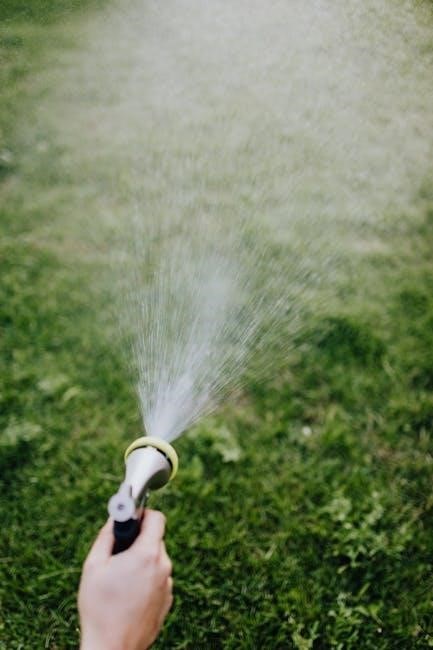
Installation Process
The installation process involves unpacking, inspecting, and mounting the unit, followed by connecting water lines, proper venting, and securing electrical connections to ensure safe and efficient operation.
6.1 Unpacking and Inspecting the Unit
Begin by carefully unpacking the Rheem tankless water heater to ensure no damage occurred during shipping. Inspect the unit for any visible dents, cracks, or missing components. Verify that all accessories, such as isolation valves and pressure relief valves, are included. Refer to the installation manual to confirm the completeness of the package. Check for any signs of tampering or wear. If any damage is found, contact the supplier immediately. Ensure all safety labels and instructions are intact and legible. Before proceeding with installation, familiarize yourself with the unit’s layout and components as outlined in the manual. This step is crucial for a safe and successful installation process.
6.2 Mounting the Water Heater
Mounting your Rheem tankless water heater requires careful planning to ensure stability and compliance with safety standards. Select a location that is dry, well-ventilated, and accessible for maintenance. Use a wall bracket approved by Rheem to secure the unit firmly to the wall. Ensure the heater is installed at the recommended height to avoid damage from moisture or pests. Level the unit to guarantee proper operation and efficiency. Tighten all mounting screws securely to prevent vibration or movement. If installing in an area prone to seismic activity, use additional anchoring as specified in the manual. Proper mounting ensures safe and efficient operation of your Rheem tankless water heater.
6.3 Connecting Water Lines
Connecting water lines to your Rheem tankless water heater requires precision to ensure proper function and prevent leaks. Start by inspecting the water supply lines for damage or corrosion and replace them if necessary. Use approved materials like copper or PEX tubing, ensuring they are correctly sized for your system. Connect the cold water line to the inlet port and the hot water line to the outlet port, following the manual’s diagrams. Tighten all connections securely but avoid overtightening, which could damage the threads. Use a water pressure test kit to verify there are no leaks before powering on the unit. Properly connected water lines are essential for efficient and safe operation of your Rheem tankless water heater.
6.4 Venting the Unit
Proper venting is critical for safe and efficient operation of your Rheem tankless water heater. Use approved venting materials, such as PVC or stainless steel, to ensure durability and compliance with safety standards. Follow the manual’s guidelines for horizontal or vertical vent termination, depending on your installation setup. Ensure the vent system is correctly sized and configured to handle exhaust gases effectively. Proper venting prevents carbon monoxide buildup and maintains optimal performance. Refer to local codes and the manual for specific venting requirements. Always use a qualified installer to ensure the venting system is installed correctly and functions safely. Regularly inspect the vent system for blockages or damage to maintain efficiency and safety.
6.5 Electrical Connections
Proper electrical connections are essential for the safe and efficient operation of your Rheem tankless water heater. Ensure the unit is connected to a dedicated 240V circuit with a appropriately rated circuit breaker. Use high-quality, properly sized wiring to avoid overheating or power issues. The installation must comply with local electrical codes and the manual’s specifications. Grounding the system is crucial for safety. Avoid using extension cords or shared circuits, as this can lead to performance issues or hazards. Always hire a licensed electrician to handle the electrical connections to ensure compliance with safety standards and optimal performance. Refer to the manual for specific voltage and wiring requirements.
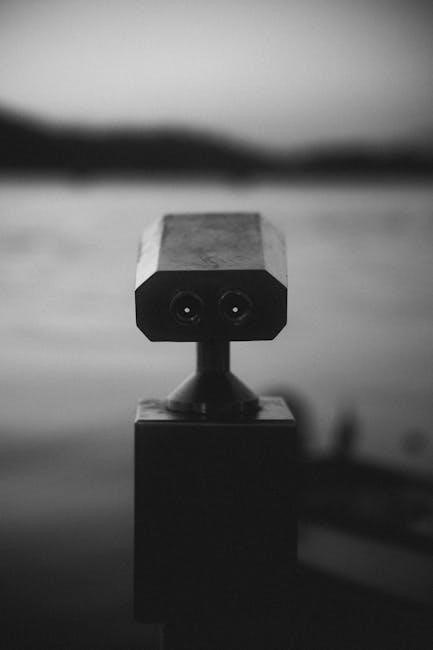
Post-Installation Steps
After installation, test the water heater to ensure proper function. Conduct final safety checks and verify all connections. Reset the unit if necessary for optimal performance.
7.1 Testing the Water Heater
Once installation is complete, turn on the water heater and set it to a high temperature setting. Check for proper operation by running hot water through a faucet. Ensure there are no leaks in water or gas connections. Verify that the vent system is functioning correctly, with no blockages or unusual noises. Monitor the temperature output to ensure it matches the set temperature. Test error codes if any appear on the display. Refer to the manual for troubleshooting guidance. This step ensures the unit operates safely and efficiently, providing reliable hot water supply. Proper testing confirms successful installation and readiness for daily use.
7.2 Final Safety Checks
After completing the installation, perform a thorough final safety inspection. Check for any leaks in water, gas, or vent connections. Ensure the vent system is clear and functioning properly, with no blockages or damage. Verify that all electrical connections are secure and meet local codes. Test the temperature output to confirm it matches the set temperature. Inspect the pressure relief valve and ensure it is properly installed. Check for any error codes on the display and address them if necessary. Finally, ensure the unit is properly grounded and that all safety features are operational. These checks ensure the water heater operates safely and efficiently, protecting both your home and family.
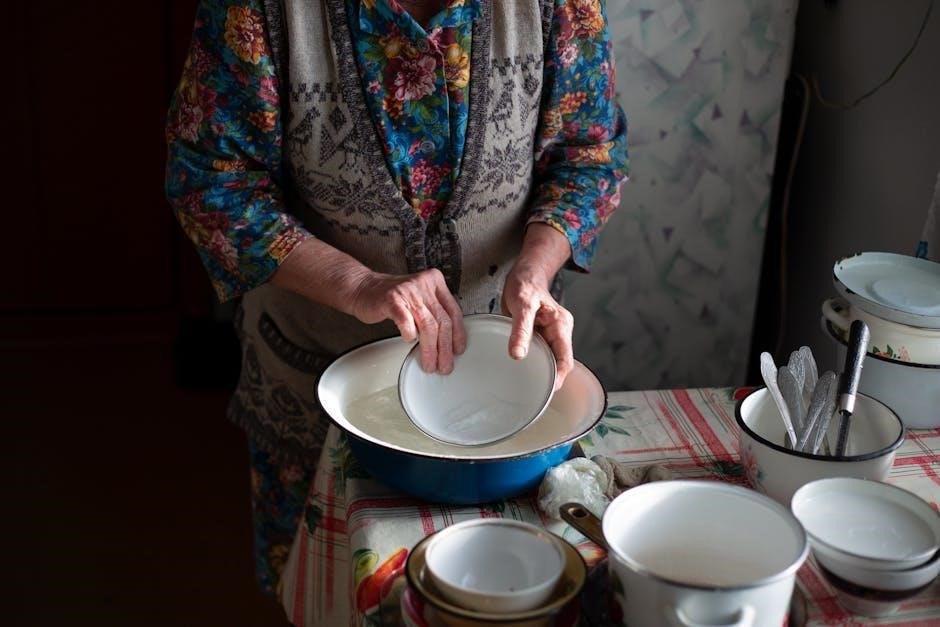
Troubleshooting Common Issues
Identify and resolve common issues with your Rheem Tankless Water Heater using the troubleshooting guide. Address error codes, reset the unit, and ensure proper functionality for reliable performance.
8.1 Identifying Common Installation Problems
Common installation issues with Rheem Tankless Water Heaters include improper venting, incorrect unit sizing, and electrical or plumbing mismatches. Ensure the venting system is installed according to the manual to avoid safety hazards. Verify that the selected model matches your home’s water demand and energy requirements. Electrical connections must meet the specified voltage and amperage ratings. Plumbing should be compatible with the unit’s specifications to prevent leaks or damage. Regularly inspect the vent terminal, air intake, and system for blockages or damage. Addressing these issues early ensures optimal performance and longevity of your Rheem Tankless Water Heater.
8.2 Error Codes and Solutions
Rheem Tankless Water Heaters may display error codes to indicate specific issues. Code 11 often relates to a blocked vent or improper venting, requiring immediate inspection and cleaning of the vent system. Code 12 typically signifies a high-temperature fault, which may involve checking temperature settings or excessive inlet water temperature. Code 98 indicates a failure in the electronic control, possibly due to electrical issues or software glitches. To resolve these, ensure proper installation, verify electrical connections, and reset the unit if necessary. Always consult the manual or contact Rheem customer support for detailed solutions to avoid further complications. Regular maintenance can prevent many of these issues from arising.
8.3 Resetting the Water Heater
Resetting your Rheem Tankless Water Heater can resolve minor issues such as error codes or unexpected shutdowns. To reset, locate the reset button, usually found near the temperature control panel or on the unit’s underside. Switch off the power supply, wait 30 seconds, and press the reset button firmly for 3-5 seconds. Restore power and test the heater. If the issue persists, refer to the error code list in the manual for specific solutions. Regular maintenance, such as cleaning filters and checking connections, can help prevent the need for frequent resets. Always follow safety guidelines when performing a reset to avoid potential hazards.

Maintenance and Upkeep
Regular maintenance ensures optimal performance and longevity of your Rheem Tankless Water Heater. Clean the filter monthly, inspect for leaks, and descale annually to prevent mineral buildup. Schedule professional checkups every year to maintain efficiency and safety.
9.1 Cleaning the Water Heater
Cleaning your Rheem tankless water heater is essential for maintaining efficiency and preventing mineral buildup. Start by turning off the power and allowing the unit to cool. Drain the heater using the provided valves or hoses, ensuring the drain hose is suitable for hot water. Use a cleaning solution, such as vinegar, and circulate it through the system with a pump. After circulating, rinse thoroughly to remove any solution residue. Clean or replace the filter near the inlet to ensure proper water flow. Regular cleaning prevents scaling and extends the heater’s lifespan. Always follow the manual’s instructions and consider setting an annual maintenance reminder for optimal performance.
9.2 Checking for Leaks and Damage
Regularly inspect your Rheem tankless water heater for leaks and damage to ensure optimal performance and safety. Check all water and gas connections, valves, and venting components for signs of wear or moisture. Look for water spots, corrosion, or mineral buildup, which can indicate leaks or system issues. Inspect the pressure relief valve and drain lines for proper function. If you notice any damage or leaks, turn off the power and water supply immediately. Contact a qualified technician for repairs to prevent further damage or safety hazards. Schedule annual inspections to maintain your heater’s efficiency and longevity. Addressing issues early ensures reliable operation and extends the lifespan of your Rheem tankless water heater.
9.3 Annual Maintenance Schedule
Performing annual maintenance on your Rheem tankless water heater is essential for ensuring optimal performance, efficiency, and longevity. Start by cleaning the heat exchanger and condenser to remove any debris or mineral buildup. Inspect and clean the venting system to ensure proper airflow and function. Check all electrical connections and components for wear or damage. Descale the unit if you live in an area with hard water to prevent mineral deposits. Review the manual for specific maintenance recommendations tailored to your model. Schedule a professional inspection annually to address any potential issues early. Regular maintenance ensures your Rheem tankless water heater operates efficiently and reliably for years to come.
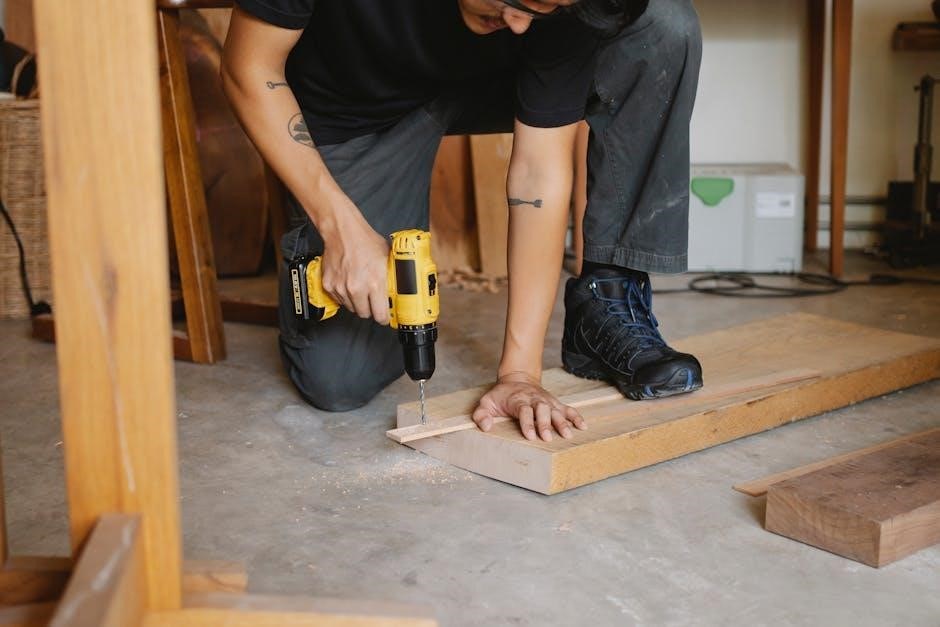
Warranty and Customer Support
Rheem offers a comprehensive warranty program, ensuring coverage for parts and labor. Register your product for extended protection. For inquiries or assistance, contact Rheem’s dedicated customer support team.
10.1 Understanding the Warranty Terms
Rheem’s warranty provides coverage for parts and labor under specific conditions. The heat exchanger is typically covered for up to 12 years, while other components may have shorter terms. Registration is required to activate extended warranties. Damage from improper installation, misuse, or failure to maintain the unit may void coverage. Labor costs for repairs may not be included after the initial warranty period. Understanding the terms ensures protection and clarifies expectations. Always refer to the official manual or contact Rheem support for detailed warranty information tailored to your model. Proper installation and maintenance are crucial to uphold warranty validity and ensure long-term performance.
10.2 Contacting Rheem Customer Service
Rheem provides dedicated customer support to address inquiries, troubleshooting, and warranty-related issues. For assistance, visit Rheem’s official website or call their customer service hotline. Live chat and email options are also available for convenient support. Ensure to have your model number and serial number ready for efficient service. Rheem’s team is equipped to handle installation questions, error codes, and maintenance guidance. Visit Rheem’s website for contact details and resources. Their support team is committed to resolving issues promptly, ensuring your Rheem Tankless Water Heater operates at peak performance. Reach out for professional guidance tailored to your needs.
